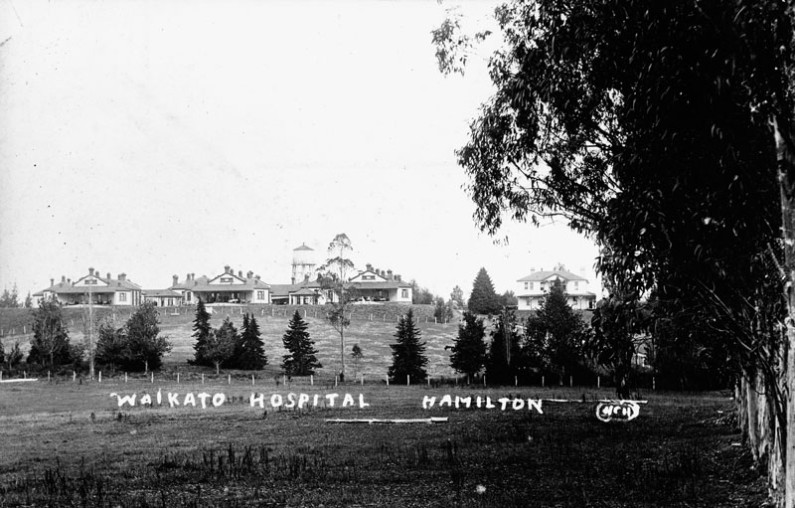The history of Waikato Hospital part 1
Early days of the cottage hospital

Waikato Hospital in the early 20th Century HCL_09283
The first hospital in Hamilton was established by the 4th Waikato Militia when they arrived in Kirikiriroa/Hamilton in 1864. It was located where the Hamilton Central Police Station is now and closed after the militia was demobilised in 1867.
When the 1885 Hospital and Charitable Institutions Act came into power, the counties Waikato, Waipa, and Raglan fell under the Auckland Hospital district. Those living in the Waikato were unsatisfied with this arrangement. It was alleged that the hospital board collected $2600 from Waikato ratepayers but only $100 was used to benefit them. They believed Waikato money was financing Auckland's healthcare and wasn't benefiting them. Mayor of Hamilton, William Australia Graham represented the Hamilton borough on the board and advocated for a hospital to be opened in the Waikato. The government approved this and the new Waikato Hospital Board had their first meeting in December 1887. There were some who favoured having cottage hospitals scattered throughout the region but there were many, Graham included, who advocated for a central Waikato hospital. Hamilton was chosen to host this central hospital, not just because of Graham's position and influence on the board but also due to it's size and the fact it was on all the main transport routes.
Just south of the Hamilton township, on the way to Ohaupo, Graham arranged a lease for 50 acres of land. The lease was for three years and included the right to purchase the land at the end of it, which they did, and the hospital sits there still today. This site was originally criticised as locals deemed it too far from the centre of town and walking access was through swamplands. A horse-drawn omnibus service was established to mitigate this problem and for a small fee it would ferry passengers between the hospital and corner of Hood and Victoria Street, where the Bank Bar and Restaurant sits now. Ohaupo Road (now Pembroke Street) would turn into an impassable bog in wet weather which would make it difficult for even wheeled vehicles to access the hospital.
At the start of 1888, the Inspector-General of Hospitals arrived in Hamilton to ensure it was adhering to colonial standards. At this point the hospital was just a six-room house which had the ability to receive seven patients but at the time of his visit there were eleven. The Inspector-General declared the building too small for the district, which wasn't a surprise to the board. By the end of the year a new building opened which had two main wards, bathrooms, an operating room, a dispensary, and kitchen. To celebrate, the board threw a fancy-dress ball, the wards were decorated, there were dancing and music, and tables were overflowing with the best cuts of cold meats and poultry. Afterwards the building was opened to the public but the patients meals were far less decadent than what was served to the dignitaries at the opening ball.
The hospital was a huge win for the growing borough and healthcare became one of the towns biggest industries. It gave Hamilton a higher status and eventually became the boroughs largest employer.
